Asus X58 Rampage III Extreme Motherboard Preview
Board Images
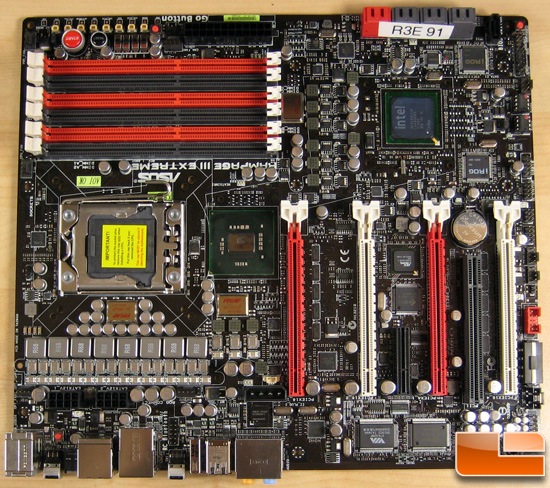
Here is how the board arrived at my door. I tore open the package, pulled the board out, and laughed hard.
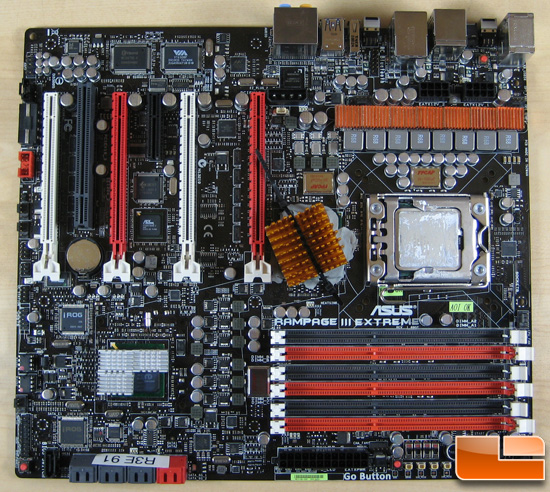
A few hours spent digging through my shelves and piles of junk and I found a cooling solution that kept all the precious bits from roasting. The heatsinks on the ICH10R keep the chip around 45C with no airflow while the X58 IOH hovers around 40C with a ~30cfm 60mm fan blowing on that heatsink. Since I couldn’t fit a heatsink over the vtt PWM sitting above the X58 IOH I have a second fan blowing over those fets. The PWM heatsinks seem to do the trick also with the backside of the PCB sitting around 40-45C meaning enough heat is being dissipated through the sinks to keep the fets from roasting.

Since there aren’t many details regarding this board I will presume it is like every other LGA1366 board in that it supports 24GB of DDR3 and the common dividers for DDR3-1066, DDR3-1333, DDR3-1600, DDR3-1866, and DDR3-2133. The memory slots are powered with a 3-phase PWM that sits off-screen to the left of the slots. Hiding above the 24-pin connector are 3 LEDs that indicate the DDR voltage. Below the 24-pin connector are 4 status LEDs that indicate the BOOT process of the board.
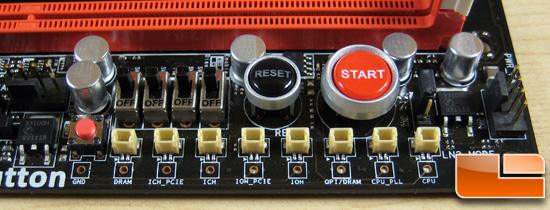
Here you’ve got that persistent Start button that has been around since
the first REX. Sitting to the right of it is the “LN2 Switch”. Since
the board came with no manual I can only guess but I’d wager it tricks
the temp diode on the processor in an attempt to alleviate cold-boot
and cold-bug temperatures when benching with liquid nitrogen. To the
left of the Reset button are four jumpers that disable the four PCIe
slots. This can be used to quickly switch between one, two, three, or
four graphic cards for benching especially if you have a complex
cooling apparatus attached to them such as waterblocks or liquid
nitrogen pots. Last up are the highly useful multimeter probe points
lined up in a row at the edge of the board. There are points for every
voltage on the board and the white connectors I believe are for cables
to easily insert multimeter probes into.
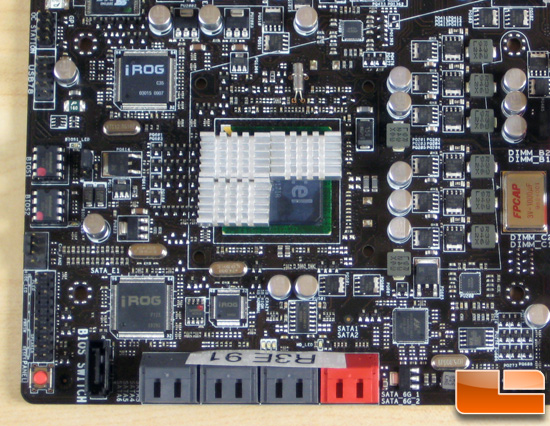
Here you can see the ICH10R southbridge in addition to the PWM feeding the DDR3 slots and the X58 IOH. Above and to the right of the red SATA connector is the Marvel SATA6 controller that provides connectivity for those red connectors.

The SATA connectors are thoughtfully angled for those of you who run multi-GPU configurations. The red connectors provide SATA 6Gbps connectivity while they black connectors provide SATA 3Gbps connectivity.
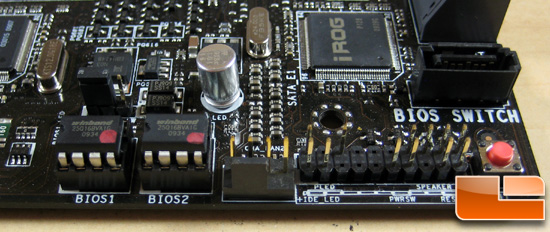
You can see the two BIOS chips that provide a comfortable level of redundancy. The red switch on the far right switches which BIOS chip is active while LEDs that are hidden above the BIOS chips indicate which chip is active.
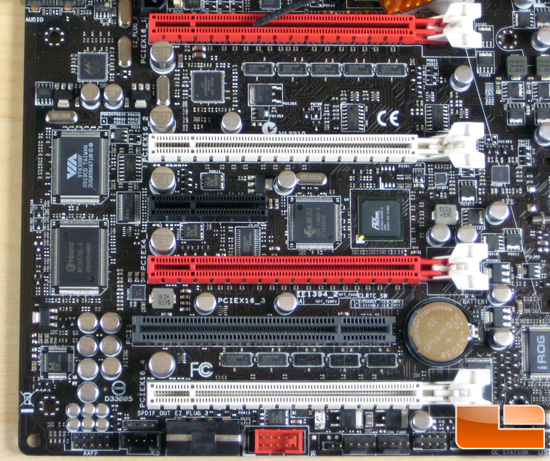
The Rampage III Extreme has the perfect PCIe layout for an ATX form factor. Well not exactly ATX, the board is the standard 12″ tall but 10.6″ wide instead of 9.6″. Anyway, since there are not NF200 or related PCIe switches the slots are wired for x8/x8/x8/x8 when four cards are used or x16/x16 when two cards are used in the red slots.
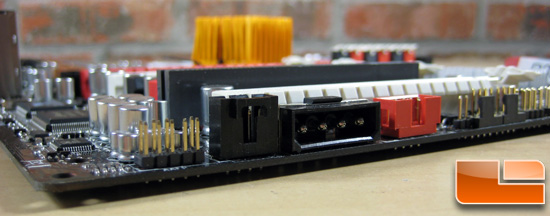
Situated below the PCIe slots is a PCIe auxiliary power connector that is used to provide enough +12v to the PCIe sub-system to prevent current overdraw on the +12v pins on the 24-pin ATX connector. This will hopefully prevent this board from burning out the 24-pin connector like we saw on the EVGA Classified with 4 GPU configurations.
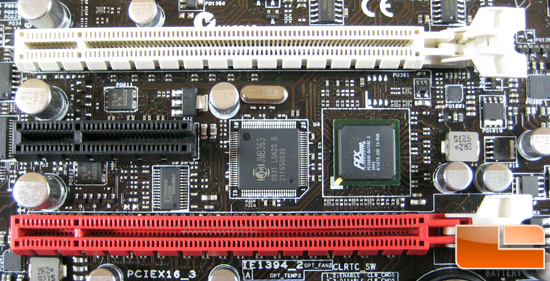
Sandwiched between the white and second red slot is a PCIe x4 slot that
shares connectivity through the ICH10R if I understand the PCIe layout
correctly. There is a PLX PEX86088 lane PCIe 2.0 switch which I believe is responsible for sharing
bandwidth between this slot, the NEC USB 3.0 controller, and the SATA
6Gbps controller.

Look familiar? Dual +12v EPS connectors just like the Classified! Not that they seem to help much, but worth noting. The 8-phase PWM is controlled by a CHiL chl8318 8-phase buck controller that explicitly mentioned overclocking in its product brief.

There are plenty of IO options available for you to choose from. That pesky PS/2 port is still around but to counter-act it are a pair of USB 3.0 ports in blue. There are 6 normal USB 2.0 ports and then a special ROG Connect USB 2.0 port sitting next to the USB 3.0 ports. This port, when the button is disengaged, acts like a USB 2.0 port. When the button is engaged though, ROG Connect is enabled. I’ll talk about ROG Connect later so all you need to know now is that it is awesome. To round things out are an eSATA port, a FireWire port, six audio jacks, and a optical audio port. Notice the single gigabit Ethernet port. I don’t know anyone who used Ethernet teaming, rather glad they cut that out.
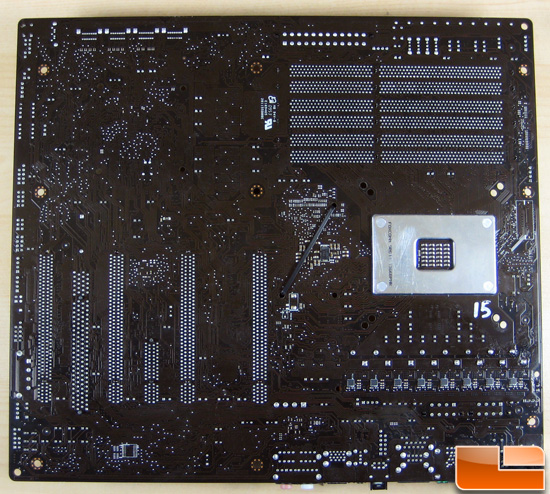
The backside of the board is pretty simple. Nothing to see here except the super awesome sharpie marker 15 by the socket. Let’s pretend the board was hand-signed.
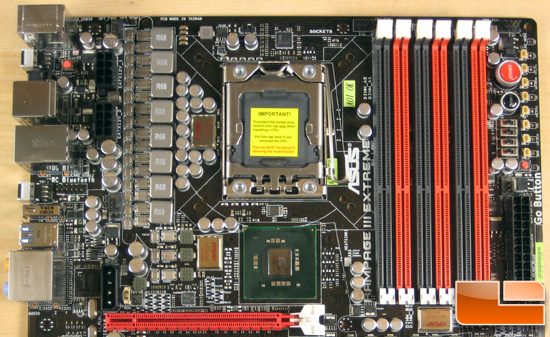
Here you can see the top-half of the board. Something interesting that I forgot to take a snapshop of is the bluetooth module that sits directly behind the ROG Connect button. The retail board will ship with a bluetooth module which is a great feature for people with bluetooth mice, keyboards, and the like.
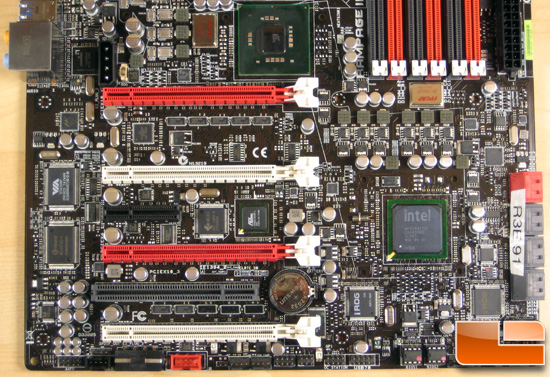
I believe I covered all the important tidbits on the bottom half of the board. One interesting thing to point out are the PCIe latches for the slots. I love these as you can disengage them with a butterknife and pull a card that is trapped between two cards without much trouble.

Comments are closed.